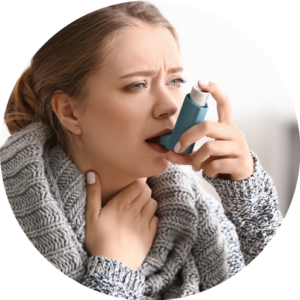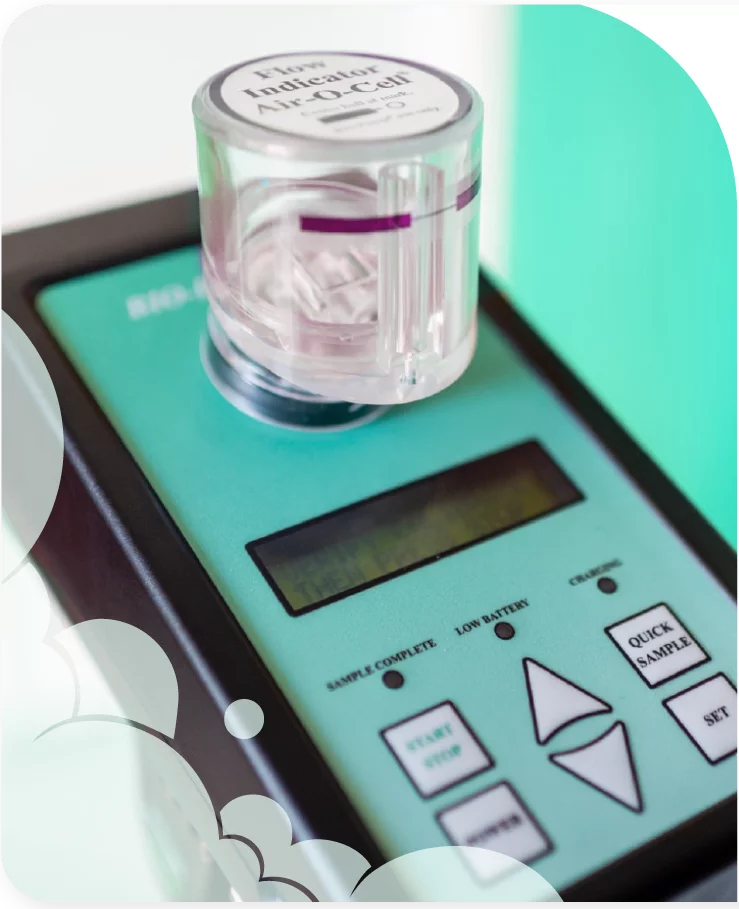Asthma allergies
Asthma
allergies
We are ETA: Licensed, Certified and Insured Mold Testing and Mold Testing Company
Asthma: an overall view
According to the World Health Organization, Asthma is a chronic lung disease that affects people of all ages. It is caused by inflammation and muscle tightening around the airways, which makes it harder to breathe. Although asthma can be a serious condition, it can be managed with the right treatment. People with symptoms of asthma should speak to a health professional.
Asthma is often under-diagnosed and under-treated, particularly in low- and middle-income countries.
Asthma and Mold: A combination for disaster
If you have a mold allergy, your immune system overreacts when you breathe in mold spores. A mold allergy can cause coughing, itchy eyes and other symptoms that make you miserable. In some people, a mold allergy is linked to asthma and exposure causes restricted breathing and other airway symptoms.
Mold spores are microscopic and easily airborne. Breathing them in can trigger symptoms and prompt severe asthma attacks or increase your allergies and the problems related to it. Especially if you or anyone at home have these two conditions.
If asthma or allergic situations are suddenly worsening and can’t pinpoint why, mold may be the one to blame. Since reactions can be quite serious, it’s important to remedy the problem right away. Only a healthcare provider can confirm that mold is causing these types of symptoms, but awareness of exposure can help put the source on the radar.
Eye, Skin, Nose & Throat Irritations
More than a cosmetic problem, mold can damage your home and contribute to health issues. Multiple types of mold can grow in the same area and you wouldn’t know the different types without testing. The most common indoor molds are the ones that can be seen growing in fabrics, wood, carpets, walls, basements, attics, or dry food items.
Having mold in your home won’t necessarily make you sick, but it does have the potential to cause certain health issues. Touching or inhaling mold spores can cause allergy-like symptoms such as eye, nose, lung, and throat irritation, skin rash, and more.
Causes
Like any allergy, mold allergy symptoms are triggered by an overly sensitive immune system response. When you inhale tiny, airborne mold spores, your body recognizes them as foreign invaders and develops allergy-causing antibodies to fight them.
Exposure to mold spores can cause a reaction right away, or the reaction can be delayed.
Various molds are common indoors and outdoors. Only certain kinds of mold cause allergies. Being allergic to one type of mold doesn’t mean you’ll be allergic to another. Some of the most common molds that cause allergies include alternaria, aspergillus, cladosporium and penicillium.
Asthma and allergy symptoms related to mold exposure generally look like this:
- Runny nose and congestion
- Sneezing
- Itchy or dry skin
- Water eyes
- Chest tightness
- Chronic cough
- Breath shortness
- Wheezing
Mold allergy symptoms vary from person to person and range from mild to severe. You might have year-round symptoms or symptoms that flare up only during certain times of the year. You might notice symptoms when the weather is damp or when you’re in indoor or outdoor spaces that have high concentrations of mold.

Contact Us
Environmental Testing Agency provides Mold Testing and Mold Inspection services in South Florida
Contact Us

Request
A Free Estimate


